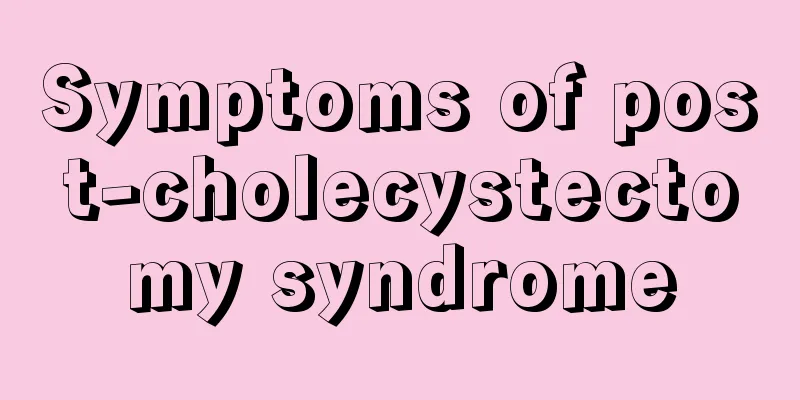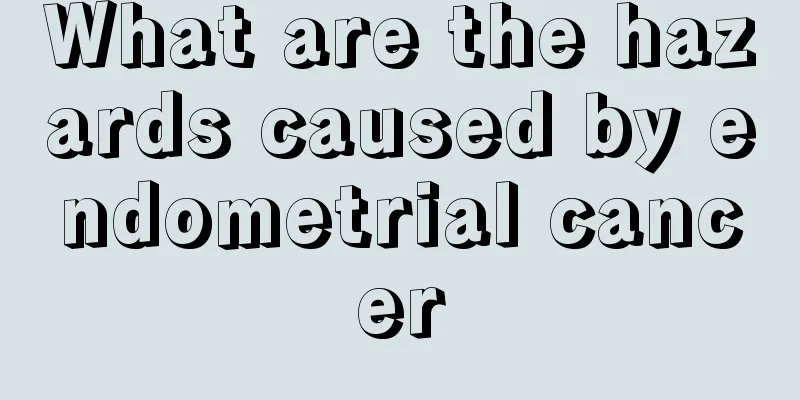Symptoms of post-cholecystectomy syndrome

|
Cholecystectomy is a common surgical operation, with good results in most patients. However, in a small number of patients, the original symptoms persist or reappearance of upper abdominal discomfort, dull pain, indigestion and other symptoms after cholecystectomy. This is often referred to clinically as post-cholecystectomy syndrome. Most scholars believe that it occurs 1, 5 to 6 years after surgery, while some scholars believe that it can occur at any time after surgery, and the reasons are more complicated. Clinical manifestations: Half of PCS patients experience abdominal pain or "dyspepsia" (fullness in the upper or right upper abdomen, borborygmus, nausea, vomiting, constipation, fat intolerance, or diarrhea) within a few weeks after surgery, while the other half experience symptoms months or years after surgery. These symptoms are nonspecific and vary depending on the underlying cause, but often include pain in the right upper abdomen or epigastrium, which is often sharp after meals. Other symptoms may include heartburn, belching, vomiting, and intolerance to fatty foods. A few patients may have severe cholecystitis or pancreatitis, with severe pain and possibly fever, jaundice, or vomiting. Examination of such patients is more likely to reveal a specific disorder than that of patients with mild or no specific symptoms. Physical examination is usually of no particular value except for the detection of obvious jaundice. complication: 1. Other comorbidities Nearly 1/3 of patients did not undergo a detailed examination before cholecystectomy, and some symptoms were ignored and only diagnosed as gallbladder disease, and then cholecystectomy was performed. The common ones are as follows: (1) reflux esophagitis, hiatal hernia; (2) gastric diseases such as gastric ulcer and gastritis; (3) duodenal lesions such as papillitis and parapapillary diverticulum; (4) pancreatic diseases such as chronic pancreatitis and tumors. First of all, they should be differentiated. As long as the possibility of these diseases is considered, the relevant medical history should be carefully inquired and relevant examinations should be performed, such as CI, gastrointestinal endoscopy, B-ultrasound, CT, etc. 2. Biliary tract motility disorder Under normal circumstances, the smooth muscle of the bile duct is regulated by nerves and humors, and gastrointestinal hormones and nerve impulses work together to harmoniously regulate the contraction and relaxation of different parts of the bile duct. For example, after eating, the gallbladder smooth muscle contracts and the Oddi sphincter relaxes, thereby promoting bile to enter the duodenum and participate in digestion. After cholecystectomy, this balance is disrupted. Most patients are able to adapt and compensate for this balance through neurohumoral mechanisms. A few patients have difficulty adapting. Some examinations have found that the pressure of the Oddi sphincter increases and the frequency of contraction increases. After eating, the secretion of gastrointestinal hormones cannot be inhibited by feedback and increases, causing abnormal contraction or spasm of the bile duct smooth muscle, resulting in abdominal pain. The symptoms of such patients will disappear after taking oral anti-inflammatory and choleretic drugs. 3. Residual stones in the common bile duct The main reason is missed diagnosis before surgery, followed by gallstones sliding into the common bile duct or intrahepatic stones being discharged into the common bile duct during the operation. If the common bile duct stones are not found before or during surgery, and patients develop biliary colic accompanied by jaundice, fever, and Chancut's triad after surgery, the best diagnostic methods are MRCP and ERCP. Once confirmed, the best method is endoscopic papillotomy (EST) to remove the stones, otherwise another surgery is required. |
<<: Is it possible to have a natural birth with gallbladder cancer?
>>: What are the symptoms of advanced liver metastasis of gallbladder cancer
Recommend
Why do I have frequent and painful urination?
Frequent and painful urination is a condition tha...
What should you pay attention to during lung cancer treatment? 3 things to pay attention to during lung cancer treatment
Nowadays, the number of people suffering from lun...
Basic knowledge of nurses
We all know that nurses are a must in life, and g...
The difference between bone tumor and bone cancer
Bone tumors and bone cancer are inclusive, and ma...
What are the late symptoms of lung cancer brain metastasis? Pay attention to these needle-shaped
Lung cancer can metastasize. If it metastasizes t...
Acne on face after hyaluronic acid injection
I don’t know when hyaluronic acid injections beca...
How to teach yourself acupuncture?
Acupuncture is a method with a very long history ...
I took one extra antihypertensive pill
After developing hypertension, you should pay att...
Is underarm hair removal good?
Many people have experienced underarm hair that i...
What are the complications of rectal cancer?
In recent years, the incidence of digestive tract...
Will mouth breathing cause nasopharyngeal cancer?
Patients with advanced nasopharyngeal carcinoma m...
How much do you know about ginger treating rheumatism
The pain that rheumatism brings to patients is be...
Should I go to the gastroenterology department for colorectal cancer?
For colorectal cancer, you can go to the gastroen...
What are the acupuncture points for treating knee joints
Although there are many clinical methods for trea...
Is there white foam on the surface of honey?
Honey is a very common thing in our lives. Many p...









